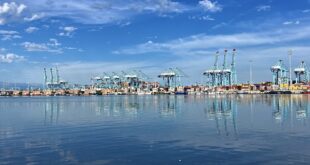In Spain, consumers could soon see the return to the 1980s-era container-deposit scheme, when glass bottles required a monetary deposit. The tax this time will be on the return of plastic packaging. The new legislation had been predicted in the waste decree of 2022 Failure is the mother of success.
The decree said that if the existing separate collection system, the well-known “yellow bins”, did not meet recycling targets set out by the EU, for single-use bottles of plastic up to 3 litres including caps and lids would be imposed a deposit-return-and-refund system (DRS).
After analysing data according to the EU’s official methodology, the Ministry of Ecological Transition (Miteco), concluded that if “failure” to reach the goals is marked by November 20, 2026, Spanish citizens will have to adopt a daily habit of returning plastic packaging back to the store.
The regulations set out clear deadlines and numbers. By 2023, 70% the weight of all single-use plastic bottles on the market must have been separated for recycling. By 2025 the percentage was supposed to increase to 77% and eventually reach 90% by 2029.
41.3%
Separation
This is the amount of single-use bottles collected separately in comparison to the 70% that Europe requires by 2023.
But the reality does not meet the standard. To determine the efficiency of the system, the ministry divided the number collected bottles by total bottles sold in 2023.
The calculations included both the waste collected by the local authorities in their yellow bins and the waste collected by private waste collectors who have a collaboration with the Ecoembes Foundation.
Mireco’s report concluded that, after examining all the circumstances that can lead to data mistakes, such as fraud and lack diligence by packers in reporting data, 214,039 tons of bottles in the above classification were placed on the Spanish Market in 2023.
According to the data collected in Spain from the 92 recyclers, and extracting only information on containers that are subject to the regulations, the weight of bottles collected separately totaled 74.482 tonnes.
214,039
tonnes
This is the total amount of plastic that has been placed on the Spanish Market in the form single-use bottles ranging from up to three litres.
Ecoembes collected 14,000 tons of bottles from private or separate collections (schools and stations, airports and airports; ministries and other institutions; sports and education centres, hospitals and shopping centres). The total percentage of SUP bottles collected separately for 2023 is 41.3%. This is far below the target of 70%.
SUR was told by sources within the ministry that the legislation states that it is the companies that manufacture these products who are responsible for packaging. They must also be in charge with implementing the DRS and financing them. Miteco technicians may be working with producers, but the latter are responsible for designing and implementing the new DRS.
Packaging is in the design phase after becoming aware of this obligation at the end last year. Aecoc is the main Spanish association for manufacturers and distributors. It has stated that it was “committed” in tackling the challenge even though many changes are needed to production, distribution, and sales processes. These changes will have a “economic impact” on the companies.
How far along is this process? The responsible parties are currently in the design phase for adapted labels where the price of deposit and return will be noted. All the necessary information will then be provided to all staff. Next, the computer system will be changed and the areas in the stores designated for empty container collection will be managed. Aecoc said, “We’re identifying these implications in order to implement the best system possible with the consumer at heart”.
The price of the first deposit for each bottle is ten cents. Taxes are not included in final prices and must be paid separately. The tax will be reimbursed upon the return of used bottles. According to the regulation, “to ensure the technical, economic and environmental viability of this system, along with plastic bottles, cardboard and can beverage containers will be included in the legislation”.
There are many changes to the production, distribution, and sales processes that will have an “economic impact on businesses”.
Many European countries have been using the container deposit system for years, including Germany (since 2003). Their example is a good model for Spanish firms, who are analyzing the pitfalls and recycling rates they have achieved.
In Spain in the 1980s, returns were handled by shops and supermarkets. The stores were responsible for paying consumers directly. Aecoc is considering the same process without excluding the possibility of installing intelligent containers.
Leonor Pascual is a member of Ainia’s packaging unit, a research association for the agricultural and food industries. She said that with the advancement of technology, placing intelligent containers “may be most convenient, accessible, and independent of store opening hours”. She stated that this method has been used in many European cities, where “it appears that the results are good”.
The new system only applies to one type of plastic (PET), so we’ll have to wait to see if this helps increase recycling rates.
Will the return system suffice to meet the requirements of recycling plastic? Plastics Europe (the European plastics manufacturer’s association) said it is too soon to say if the new legislation will advance recycling targets. The new DRS is only applicable to PET. We will therefore have to wait until the first results are in to determine if this new system increases recycling rates of all plastics. According to Spanish state data, plastic production has declined by about 10% in Spain and recycled plastics have decreased by around 4%, said the association.
According to Alianza Residuo Cero Plataforma Ley de ResiduosYA – the two organisations most supportive of the changes – aim to “make the method as accessible as possible” to all. They call on all stores and supermarkets that sell drinks to expand the scope of the return system so that it includes glass containers and other reusable ones, and not only single-use bottles.
“The new system is compatible with the yellow bin as some plastics must still be collected separately.”
Ecoemebes has said that they will assist companies in complying with the new regulations. The environmental objectives of selecting packaging for collection are clear. The future implementation of DRS is also a reality. As an organization that has worked to ensure the circularity in packaging for over 25 years, we want to stand by producers as they evolve the current model to a DRS which meets the needs and wants of Spanish society.
The yellow bin is not going to disappear. As the regulation only applies to a certain type of packaging (snacks bags, softener bottle, tincans, etc.), it will be necessary to separate other plastic waste. It is still in effect. The yellow bin and new return system must coexist.
 Costa News Spain Breaking News | English News in Spain.
Costa News Spain Breaking News | English News in Spain.






